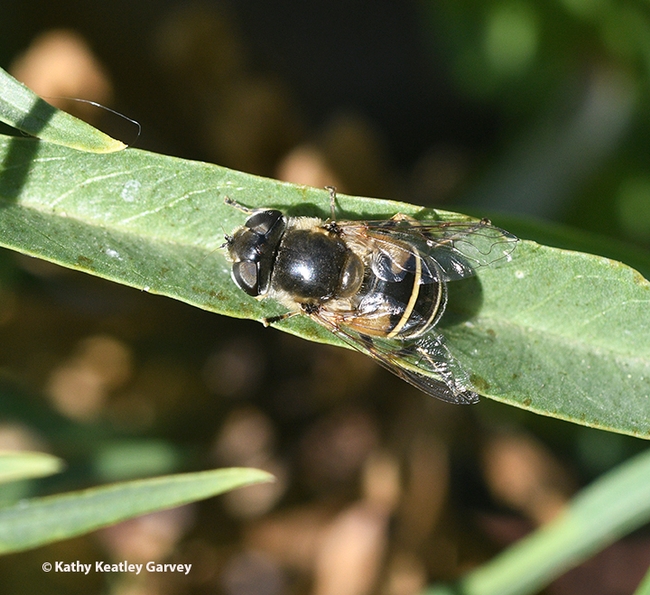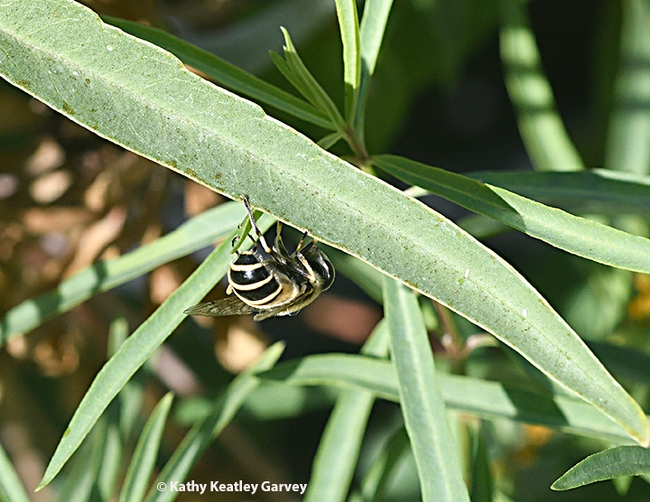Sometimes overlooked as pollinators are the syrphid flies, also known as "hover flies" or "flower flies."
Unfortunately, they are often mistaken for honey bees. Hey, if it's a critter on a flower, it's a bee, right?
Not necessarily!
Syrphid flies are easily distinguished from honey bees. Among the differences: (1) honey bees don't hover, (2) syrphids have only one pair of wings, while honey bees have two (3) syrphids have short, stubby antennae, while honey bees have long, bent antennae called genticulate antennae and (4) syrphids belong to the order Diptera, while honey bees are in the order Hymenoptera.
We spotted this syprhid fly soaking up some early-morning sun It stayed still for a dorsal photo and then sensing danger, slipped under a leaf.
Scientists estimate that there are more than 6200 species of syrphid flies in the world, and more than 3000 in California alone.
The UC Statewide Integrated Pest Management Program (UC IPM) has this to say about syprhids in its Natural Enemies Gallery post: "Adults are robust to slender flies 1/8 to 1 inch (4–25 mm) long, varying by species. The broad head is about the width of the abdomen or wider and has large eyes with distinct antennae. The body of many adults is black with bands or stripes of orange, yellow, or white, resembling stinging bees or wasps. Some species are mostly brown, metallic blue or green, yellow, or combinations of these or other colors. For example, adults of ant-predaceous Microdon species are blackish to brown or bright to dark greenish."
Many syrphids prey on aphids and mealybugs, so they're good guys and gals to have in your garden.
Says UC IPM: "Most species are predaceous, most commonly on aphids or mealybugs. Some syrphids prey on ants, caterpillars, froghoppers, psyllids, scales, other insects, or mites."
The good guys and gals of the garden...
Attached Images:

